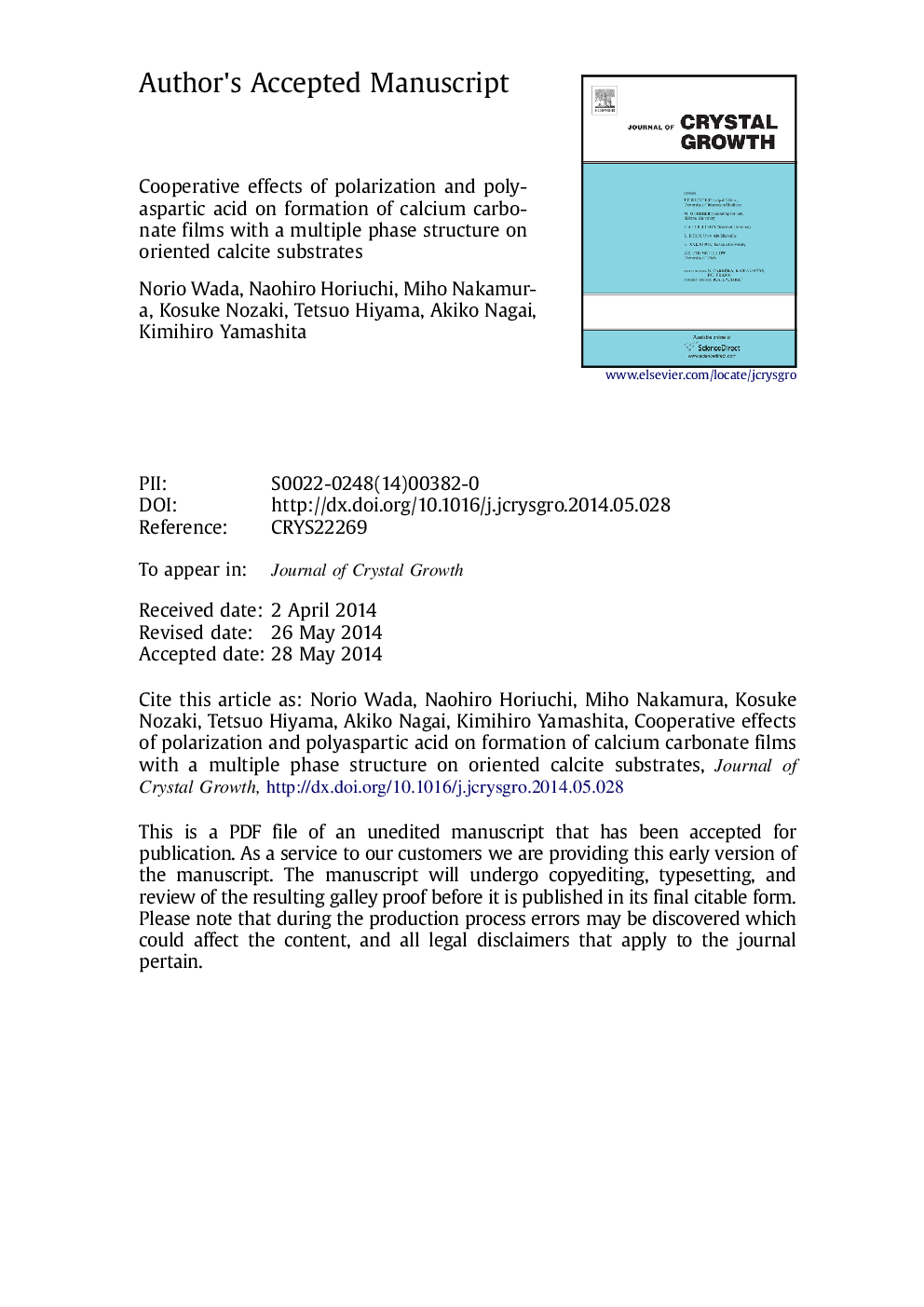| Article ID | Journal | Published Year | Pages | File Type |
|---|---|---|---|---|
| 8150953 | Journal of Crystal Growth | 2014 | 27 Pages |
Abstract
We demonstrated the crystallization of calcium carbonate (CaCO3) on polarized calcite single crystal substrates with three different orientations characterized by the (10.0), (00.1), and (10.4) planes in the presence of polyaspartic acid (PAsp) as an organic additive. The precipitates had a multiple phase structure with thin-film-like and hemispherical forms and were a mixture of calcite, aragonite, and vaterite. The main component of the thin-film-like layers was calcite elongated along the c-axis, regardless of the differently oriented calcite substrates, while the main component of the hemispherical layers was aragonite. The individual crystals of each CaCO3 polymorph shaped the morphology of the mesocrystals. Calcite-aragonite complex films with two distinct structures are similar to those found in pearls and bivalve shells. The combined effect of a surface electric field by virtue of the polarized calcite substrates and PAsp promoted the formation of the thin-film-like layers and moreover, acted remarkably on the negatively charged surface of each oriented calcite substrate. The matching between the β-sheets of PAsp and the calcium-ion arrangement on top of the oriented calcite substrates explained the preferential calcite crystallization in the form of the thin-film-like layers and why calcite precipitates are in the following sequence: (00.1)>(10.4)>(10.0).
Keywords
Related Topics
Physical Sciences and Engineering
Physics and Astronomy
Condensed Matter Physics
Authors
Norio Wada, Naohiro Horiuchi, Miho Nakamura, Kosuke Nozaki, Tetsuo Hiyama, Akiko Nagai, Kimihiro Yamashita,
